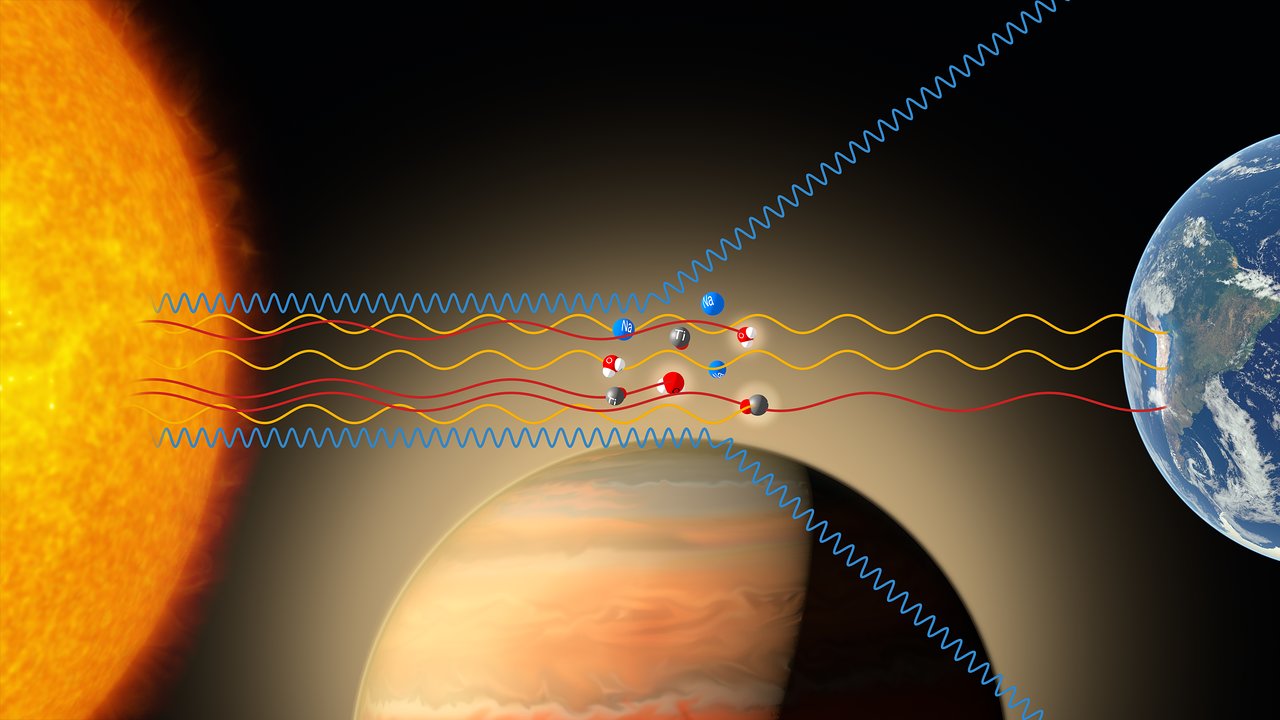Pekelný svět s titanovou oblohou | ESO Česko
http://www.eso.org/public/czechrepublic/news/eso1729/?lang
Pomocí dalekohledu ESO/VLT se podařilo poprvé detekovat oxid titanatý v atmosféře exoplanety
Astronomům využívajícím dalekohled ESO/VLT se poprvé podařilo detekovat molekuly oxidu titanatého v atmosféře extrasolární planety.
Objev u exoplanety WASP-19b, která je typu horký Jupiter, učinili vědci s pomocí výkonného zařízení FORS2. Přináší unikátní informace
o chemickém složení, teplotě a tlaku v atmosféře tohoto neobvyklého a velmi horkého světa. Výsledky byly publikovány v prestižním
vědeckém časopise Nature.
ESOcast 126 Light: Titanium oxide in exoplanetary atmosphere (4K UHD)
https://www.youtube.com/watch?v=znvXbvs2LEg
Astronom Elyar Sedaghati (vědecký pracovník ESO, absolovent TU Berlín) a tým jeho spolupracovníků zkoumali atmosféru extrasolární planety
WASP-19b v dosud nedostižných detailech. Tato podivuhodná planeta se velikostí podobá Jupiteru. Pohybuje se však tak blízko své mateřské
hvězdy, že jeden oběh jí trvá pouhých 19 hodin a odhadovaná teplota atmosféry planety dosahuje až 2 000 °C.
WASP-19b při pohledu ze Země přechází přes disk své mateřské stálice a přitom část záření hvězdy prochází atmosférou planety. Atmosféra
ve světle zanechá jemné známky vypovídající o jejím složení. Díky použiti přístroje FORS2 a dalekohledu ESO/VLT (Very Large Telescope)
se týmu po pečlivé analýze světla přicházejícího od hvězdy podařilo odhalit, že atmosféra exoplanety kromě všudypřítomného zákalu
rozptylujícího procházející záření obsahuje malé množství oxidu titanatého (TiO), vody a stopy sodíku.
